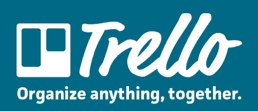While despatched on a mission of digital mercy a few weeks ago Mr Briggs (of this parish) and I fell to comparing our computers. Or rather he fell to ridiculing my rather ancient Samsung laptop (seven years old I think, it doesn’t like to process video, original power supply fell apart and it now boasts a rather lovely Maplin back up device). Apple fans do tend to look upon me with fear tinged with pity when I unpack the machine.
I explained to Dave that all I really need is an OS to show me a browser because I live in the cloud. He’s become slightly cloud obsessed lately with visions of Chromebooks floating before his eyes. When he challenged me to write a blog post about my online working I realised that that I’m still not quite there.
The Basics
I do rely heavily on those lovely people at Google. They handle my mail for a start. A huge variety of email addresses are sent into my email account (or collected by GMail from mailboxes) and the system handles them smoothly. I virtually never see any spam and it is rare (though not unheard of) for real mail to get caught in the spam filter. I have a couple of Android devices that sync happily with the big G’s servers and lo: mail wherever I need it.
And I make a lot of use of Google Docs. Or Google Drive as we must now call it (what are they going to call the self-directed cars then?). The word processor meets my day to day needs.
Google Spreadsheets meet my fairly simple requirements perfectly well. There was a time when I demanded much of my spreadsheets but those days are mostly behind me. And for the days when they aren’t I have Google Fusion Tables.
Paying for stuff
Mountain View doesn’t seem to be able to deliver a decent task manager. For this I must turn to the excellent Remember The Milk. It’s idiosyncratic but it is fast, in the cloud and it has a cow logo which is nice.
For presentations I am inexorably drawn to SlideRocket. This is NOT cheap but it does make slideshows look good and its library system is easy to understand and flexible. If, like me, you create a lot of slideshows and then embed them all over the place it is probably worth the money. I guess it must be worth the money or I wouldn’t pay. I wish it cost less money though.
I use Hootsuite to help me manage my extensive social media real estate. I even pay them a little.
Other toys
I do use Dropbox but I haven’t fallen in love with it.
I’m more enthusiastic about Evernote. Especially since its Android app has got so good.
Google Reader is quite annoying but I haven’t found anything better for subscribing to blogs and other sites via their RSS feeds. And it handles my podcasts quite well.
What I still don’t do in the cloud.
Serious document prep. When I have a big report to prepare I will do the grunt work in Google Drive but I’ll apply the final formatting offline in Libre Office because it packs a lot more formatting oomph. And Scribus and InkScape are still my go-to guys for what we used to call DTP.
Stills and video editing. Actually simple edits are now pretty easy to do on things like Picnik (now integrated into Google+ of course). For stills there’s the GIMP for video there’s Kdenlive and for sound Audacity, natch.
When the rain comes
There are two big risks with leaving your stuff lying on random servers scattered around the world:
- other people might see the data without my permission
- the data might vanish or be locked away from me
So I fret a quite a bit about security. Google has good tools and I try to keep an eye on account activity, change passwords and use 2-factor authentication and so on. As to people being allowed in without my knowledge. I try not to think about that. This does make moving between machines less than frictionless but it seems to be sensible.
And I regularly take copies of my data and documents out of the internet and hide them in a lovely little Buffalo Terastation where they nestle quietly on a RAID. Google’s Data Liberation Front is a bit marvellous in this regard.
Luckily no-one asks me to do any heavy coding, design or other things that require a sooper-dooper machine. I suppose I could do that on a virtual box but that’s hardly the same.
But the crucial question is, when the old laptop finally gives up the ghost should I buy a shiny Chromebook or just shove Linux on a passing laptop?


